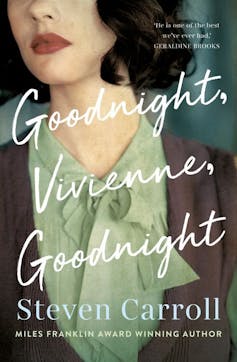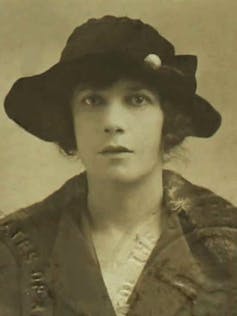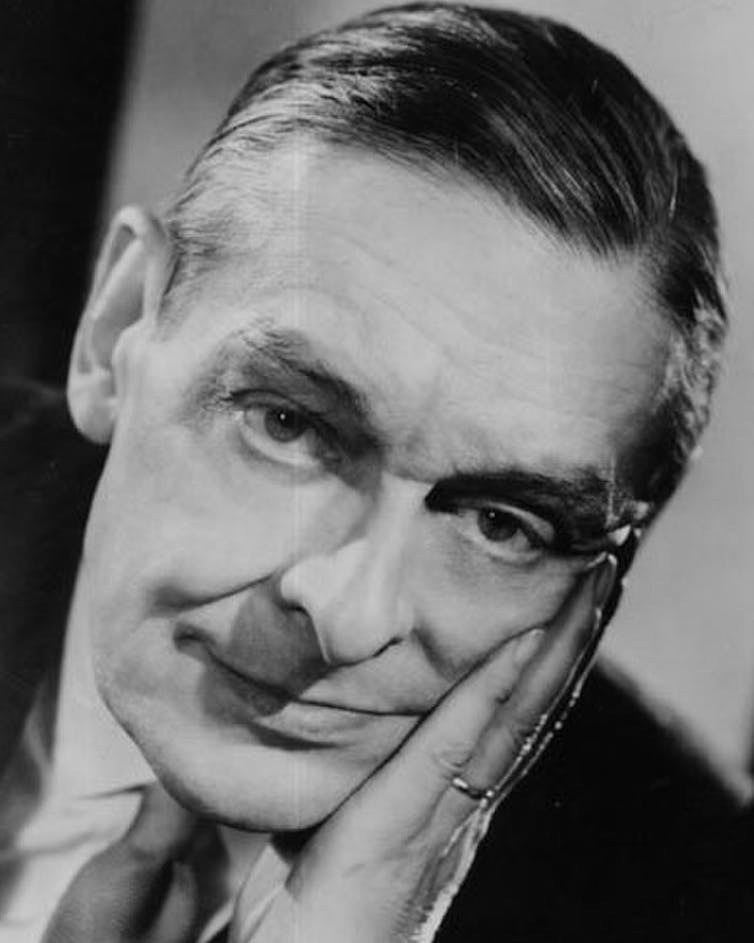This year is the centenary of T.S. Eliot’s revolutionary modernist poem, The Waste Land (1922). Steven Carroll’s new novel, Goodnight, Vivienne, Goodnight, sympathetically reimagines the life of Vivienne Haigh-Wood, Eliot’s first wife, and reflects on his life and poetry. Its publication is both welcome and timely.
Review: Goodnight, Vivienne, Goodnight - Steven Carroll (Harper Collins)
Carroll is best known for his Glenroy novels, a six-volume meditation on Australian family life focused on the Melbourne suburb of that name. In recent years, however, he has also been writing a series of novels loosely based on aspects of T.S. Eliot’s life.
Each novel intersects with one of Eliot’s Four Quartets, which he wrote in the late 1930s and early 1940s. The previous volumes are The Lost Life (2009), A World of Other People (2013) – which shared the 2014 Prime Minister’s Award for Fiction with Richard Flanagan’s The Narrow Road to the Deep North – and A New England Affair (2017).
Goodnight, Vivienne, Goodnight brings Carroll’s Eliot Quartet to a deeply satisfying completion.

The novels reflect Carroll’s admiration for Eliot’s poetry. With their emphasis on the interior life of the characters, however, they also suggest the influence of Virginia Woolf and James Joyce. Consciousness, the theatre in which dreams, wishes, memory, emotion and thought interact, is central to Carroll’s narrative imagination. It is very much to the fore in Goodnight, Vivienne, Goodnight.
The novel opens with the heroine remembering the day Eliot left her, ostensibly to go to America for a year, but actually intending to separate permanently. The torment of Eliot’s abandonment is vividly portrayed, but so too is Vivienne’s newly found capacity to analyse the marriage and the causes of their unhappiness.
Vivienne’s physical and mental health had never been robust, and Eliot’s decision was traumatic for her. After exhibiting erratic behaviour and delusions, she was confined to Northumberland House, a London asylum, where she died in 1949. Carroll opens a gap in this personal history by imagining Vivienne regaining her sanity and escaping with the assistance of friends.
Eliot was an intensely private man, who forbade the publication of any biography during his lifetime. He threatened legal action against a critic who published a biographical interpretation of The Waste Land. In the 1980s, the playwright Michael Hastings encountered hostile resistance from Eliot’s friends and family while researching his play (later a film) Tom and Viv (1994).
Since then, several biographies, memoirs and collections of letters have been released, enriching our knowledge of the private lives of Eliot and his circle, and providing more detailed information about the personal experiences that were reworked into the poems. Carroll’s understanding of their relationship is broadly consistent with those presented by the excellent biographers Lyndall Gordon in The Imperfect Life of T.S. Eliot (2012) and Robert Crawford in Young Eliot (2015).
Eliot’s anti-Semitic discourse and imagery
The action of Goodnight, Vivienne, Goodnight is divided between the heroine’s attempts to remain at large in London and police detective Stephen Minter’s quest to find her.
Both Minter and Vivienne are critical readers of Eliot’s actions and writings. Vivienne interprets him from the perspective of her obsession, reflecting on their lost love. Minter reads Eliot with a view to understanding the backstory of his missing person and her celebrated spouse. Initially uninterested, he soon finds some intriguing discrepancies and begins to experience “the tug of the tale”.

Vivienne identifies the episodes that gave rise to the poet’s images, centring herself in his creative life. Minter also reads for clues to the history of the relationship, finding more than he expects. The son of Jewish refugees from Austria, he feels addressed and besmirched by Eliot’s anti-Semitic discourse and imagery.
Alternating scenes provide a window onto the world of wartime London in the early summer of 1940, a time of tense waiting. Barrage balloons outnumber aircraft. Foreigners, including Minter’s parents, are being interned. Men in uniform look suspiciously on those who are not.
Carroll’s sketch of the cultural life of the city reflects sardonically on the novel’s main themes, as Vivienne attends amateur productions of Eliot’s play The Family Reunion (1939) and Noel Coward’s Private Lives (1930). This alternation of perspectives is cleverly managed by Carroll to create suspense and surprise, in both the stories of the hunt and of Vivienne’s psychological condition.
Carroll presents complex portraits of Minter, Vivienne and Eliot. The latter was at the height of his reputation during the 1940s: the most famous poet, critic and literary editor in England. In this novel, he is viewed externally, through the critical but not unfair eyes of Vivienne and Minter, and various staff at the publishing house Faber and Faber, where Eliot worked from 1925.
This “picture composed of angles, all different, but all coming together like clues” presents Eliot as a deeply repressed figure. He wears the mask of a grave and learned elder, but his formal politesse includes an acute sense of social superiority. Carroll captures both the oracular persona of the Four Quartets and the fallible human being who wrote them.

Vivienne’s escape from Northumberland House coincides with the publication of East Coker (1940), the second of the Four Quartets. A public reading of the poem provides the climax for the novel.
East Coker is the village in Somerset from which Eliot’s ancestors sailed for America. It is also the place where the poet, who famously made the journey in reverse, was interred at his death. The poem includes the self-critical lines,
… Do not let me hear
Of the wisdom of old men, but rather of their folly,
Their fear of fear and frenzy, their fear of possession,
Of belonging to another …
The lines seem to reflect on the marriage and the personalities of Vivienne and Eliot as they are represented in Goodnight, Vivienne, Goodnight.
Vivienne as ‘crucial collaborator’
Gender politics within the family, marriage and workplace are subtly explored in the novel. Vivienne’s contributions to Eliot’s literary career recur throughout.
Vivienne is known to have suggested the name for his influential literary magazine, The Criterion, for which she also wrote. She also advised on drafts of The Waste Land, even suggesting certain lines. Although keen to begin a new life, she remains invested in Eliot and in a vision of herself as his crucial collaborator.
In a remarkable passage shot through with imagery from The Waste Land, Carroll presents a scene from the marriage that shifts smoothly from life to text. Marital anger and despair modulate into Vivienne doing the voices of Lil and Albert, in effect creating the pub-closing scene in Part Two of Eliot’s poem.
Those lines — “Goonight Lou. Goonight May. Goonight” — are echoed in the title of the novel. Their poignancy suggests Vivienne’s losses and Eliot’s rise.
Authorship and the place of biography
In his introduction to Tom and Viv, Michael Hastings described his play as a “critical fiction”. The same label might be applied to Goodnight, Vivienne, Goodnight. It blends history and imagination to reflect on Eliot, authorship and the place of biography in the understanding of literature.
Eliot insisted in his essay “Tradition and the Individual Talent” (1919) that “poetry is not a turning loose of emotion, but an escape from emotion; it is not the expression of personality, but an escape from personality”.
Great poetry, he believed, required a depersonalisation of experience, a distilling of its meaning. By creatively reconnecting poetry with its personal sources, Goodnight, Vivienne, Goodnight invites readers to reconsider Eliot’s theory of poetic impersonality. Might his assertion of the necessary “extinction of personality” have been a product of experience, a symptom of his repression?
Despite its critical portrait of Eliot, the novel is not really out to debunk his achievement. While focusing mainly on the life of Vivienne, it also reflects Eliot’s legacy as a poet. The interior monologues of the two protagonists are sprinkled with images and phrases drawn from his writing. His words shape their perceptions of the modern city, alienation, and the search for meaning and value. I suspect they inform Carroll’s understanding too, as they do many readers’.

Eliot was a notably intertextual writer, who declared that “Immature poets imitate; mature poets steal.” Carroll quietly appropriates his method. One of the pleasures of the novel is the way allusions to earlier literature are unobtrusively dotted through its lively, poignant and economical narrative.
Goodnight, Vivienne, Goodnight is a humane and creative remixing of biography, poetry and social history that speaks to current concerns about personal identity and recognition. Fiction lovers and Eliot fans alike will feel “the tug of the tale”.

